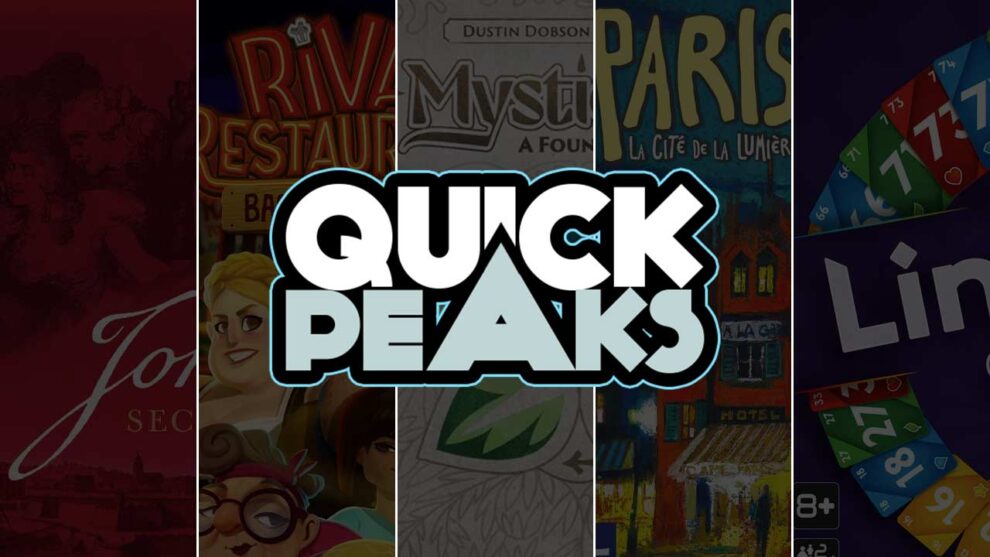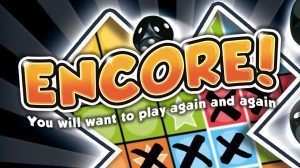John Company: Second Edition – K. David Ladage
I knew going into John Company what I was getting into. This is a deep, heavy, and oftentimes disturbing game. I minored in history in college; much of that was Asian history (a favorite topic). The focus of my education was China, thus the specifics and peculiarities of the East India Company were something for which I had an interest, but not a deep knowledge.
John Company delves into the operations of the East India Company and how its officers exploited—and even slaughtered—the people of India. It deals with this topic rather directly. The rules include a warning before you play that everyone at the table should know what they are getting into. Even with that warning, there were quite a few moments where I was horrified at just how bad the people we were portraying actually were.
That said, the game is eye-openingly educational and will test the limits of what you are willing to do to gain a point. I am sure there are people who can play this game and, in their mind, abstract everything to such a degree such that the moral and ethical implications are nullified. I can’t do that. I get the strong feeling that this is the designer’s intention.
Ease of entry?:
★★☆☆☆ – Not an easy onboard
Would I play it again?:
★★★★★ – Will definitely play it again
Read more articles from K. David Ladage.
Paris: La Cité de la Lumière – Bob Pazehoski, Jr.
“I know I’m not thinking enough about this.”
Thus said Bob halfway into the first phase of the two-player Devir release, Paris: La Cité de la Lumière (check out our full review). Phase one involves laying tiles of cobblestone into a recess inside the game box (a lovely decision) and collecting polyomino buildings with the hope of laying them atop a created jumble of spaces in your color. Phase two is then a combination of laying the buildings into the box board and exercising the eight special single-use abilities—first-come, first-serve. The object is to create a cluster of buildings adjacent to the street lights on the tiles. Secondary points leak in from those special abilities and the creative opportunities they present.
This vision of Paris is a brain tax from the outset. Every decision matters as players anticipate and prioritize their own moves, those of their opponent, and the realm of possibility in the specials. Though I realized I was underthinking it, I also realized how special this design was from the beginning. It’s a small box with big fascination, and it’s over in 20 minutes. It’s gold. Gold, I say.
Ease of entry?:
★★★★☆ – The odd bump or two
Would I play it again?:
★★★★★ – Will definitely play it again
Read more articles from Bob Pazehoski, Jr.
Mysticana: A Foundation Deck – Andrew Lynch
Mysticana is not a game. It is a system. These 18 cards, divided into three suits, are intended to serve as a springboard for designers. They operate on the same principle as rock, paper, scissors. Earth, Fire, and Water interact in a manner you may recognize from your first play of Pokémon Blue. Within that framework—there are cards from A-6 in three suits that each trump one another—designers are free to run wild.
The results are pleasant without making any particular impression. There are trick-taking games, solo puzzles, and guessing games. It’s a good exercise in seeing what kinds of things you can come up with given a set of restrictions, but my enthusiasm for the results doesn’t stray far beyond the academic.
Ease of entry?:
★★★★★ – No sweat
Would I play it again?:
★★☆☆☆ – Would play again but would rather play something else
Read more articles from Andrew Lynch.
Rival Restaurants: Back for Seconds – Justin Bell
From time to time, a review copy arrives at my door that I didn’t request; such was the case with the expansion to Rival Restaurants, Back for Seconds. I had a chance to play the expansion recently with two other folks who were familiar with the base game, so we did a single play to check out the new additions.
Back for Seconds only has one additional game feature: events. Regular readers know I’m not a big fan of event cards, but I liked the way they are implemented in Back for Seconds. Players get a full round to see how an event will impact the entire table, then the event kicks in during the next round, allowing for a decent amount of pre-planning so that everyone can set up/prepare for the impending event. More Chefs, more Action Cards, and more restaurants (the player mats that provide bonuses and track scores) round out the extras.
The expansion does fix one rule regarding flexibility around recipe fulfillment. But most of my other thoughts about the Rival Restaurants franchise apply here as well. This is a fun game at its max player count (six), but not recommended at other player counts because of a lack of competition and bartering during the “Buy and Barter” step. The game still runs a hair too long. The random setup might mean that a player will be dealt two recipes that grant a bonus allowing that player to trigger restaurant player mat bonuses early. As a beer-and-pretzels social experience, Rival Restaurants is still a good laugh. As a strategy game, it is a harder recommendation.
Ease of entry?:
★★★★☆ – The odd bump or two
Would I play it again?:
★★☆☆☆ – Would play again but would rather play something else
Read more articles from Justin Bell.
Line-It – Andy Matthews
Line-It is part of my favorite genre of games—the light card game. Call it a filler game, call it an “appetizer” (where a heavier game is “the meal”), just don’t forget to call me to the table. In Line-It, players are trying to get the most points by playing cards in a line in front of them, in either ascending or descending order. The cards don’t need to be sequential, but they do need to either go up or down.
On your turn you’re selecting a card from the middle of the table and either putting it into your hand, or playing it in front of you. If you already have a card in your hand, you can also play an additional card. The way you earn points is by cashing in your line, discarding three of the cards and banking the rest. So you’re incentivized to make your line as long as possible. And therein lies the tension. Because you can only play what you’ve been dealt, you might occasionally have to descend from an 87 all the way down to a 40, simply because you didn’t get the cards you needed. Add to the fact that after every player has selected a card, any leftover cards go into a pot based on color. And if you’re the first player to play 3 cards of a color, you get those points straight up.
The only reason I’m not rating it more highly is because there was enough ambiguity in the rules that we had to read them really closely before we played, and even then we realized after a few hands that we’d interpreted them incorrectly. Some concrete examples in the rulebook and a more clear explanation of certain rules, and we’d be good to go. So give Line-It a chance.
Ease of entry?:
★★★★☆ – The odd bump or two
Would I play it again?:
★★★★☆ – Would like to play it again















Thanks for the summary of some very good games.
Regarding Mr. Ladage’s comments about the designer’s intentions when Cole Wehrle refined John Company into its second edition, I would say that the game’s sometimes disturbing subject matter is respectfully presented while also managing to be engaging for purposes of entertainment (or “edutainment” if the players feel motivated to learn more about the dark aspects of the British Empire). The mechanics and other details reflect Mr. Wehrle’s PhD work on this era of history, and the positive reception of this interactive-historical game indicates there is a growing market of gamers willing to explore more mature themes.
Unlike Brenda Romero’s Train, with its overly-hyped twist ending that failed to adequately convey the message of what it means to be complicit, JC2E does provide each player enough agency so that the consequences of their decision to wage war in India or extort the government for a bail-out are undeniable even if somewhat abstracted. And striking the right balance between engaging gameplay and morally hazardous semi-simulation is why I think our game group has enjoyed our time together exploring JC2E.
I look forward to Mr. Wehrle providing a similar, thoughtful treatment when he revisits “An Infamous Traffic” with its own second edition.